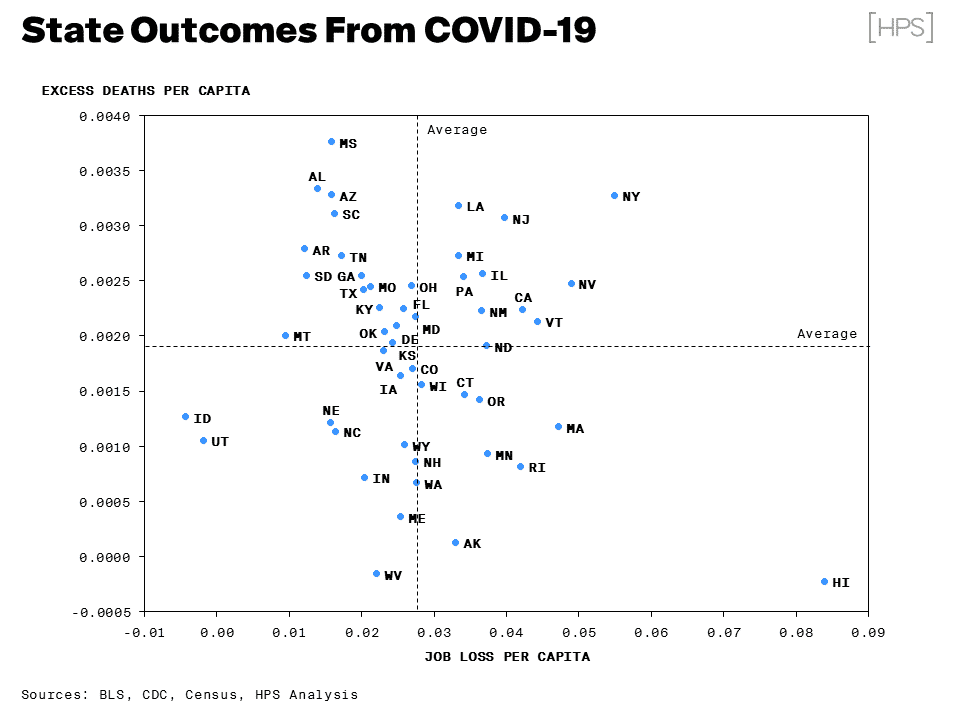50 States, 50 Pandemic Responses: An Analysis Of Jobs Lost And Lives Lost
The pandemic is not over, but it now feels like the outcome is written. We know a lot more now than we did a year ago—not only about the virus but also how to respond to it. The policies and choices, successes and failures are now surfacing and strewn about like the debris after a storm.
One of the most interesting aspects of the pandemic aftermath is the 50 different ways our federal system approached the crisis. States had, and have, different policies and approaches to virus mitigation, and the outcomes of that inadvertent policy experiment are now becoming apparent.
Florida and New York seem to have staked an early claim as the states the political class wants to fight over, but it is worth starting with the data before we force the evidence through the red and blue filters.
To evaluate individual state responses to the pandemic, we took a look at two of the major considerations in balancing the response: jobs and deaths. Ultimately, policymakers wanted to keep as many people from dying and as many people from losing their jobs as possible. Unfortunately, these goals were sometimes naturally at odds throughout this pandemic. Jobs that require close proximity to others (for either employees or customers) resulted in greater COVID-19 spread, and thus more deaths.
To explore the trade-offs that were made, we plotted states by their per capita excess deaths using CDC data against the BLS data on their per capita job losses over the past year. Excess deaths as a measure should generally control for age and demographic differences between states and capture other dimensions of the pandemic like deaths of despair or undiagnosed COVID deaths (of note, North Carolina’s death reporting has a significant lag and so we used reported COVID deaths for that state data; there is a lag in death data generally that complicates analysis).
At a high level, it appears that the US lost 13 jobs for every person who died from COVID-19 in the year following the start of the pandemic, but this is not shared evenly across states. States with major hospitality and tourism sectors were hit hard in terms of job loss, with the impact falling unevenly across sectors. And states that were in the first wave of infections—when the healthcare system was still learning how to treat COVID-19—fared comparatively worse on their death tolls.
New York, which falls into both categories, had the worst overall outcome, with both high excess deaths and high job losses. The states that emerged in the best position were Idaho, Utah, and West Virginia, all with some combination of low loss of life and low loss of employment. And Florida? In the middle on both dimensions, which should give everyone something to fight over.
